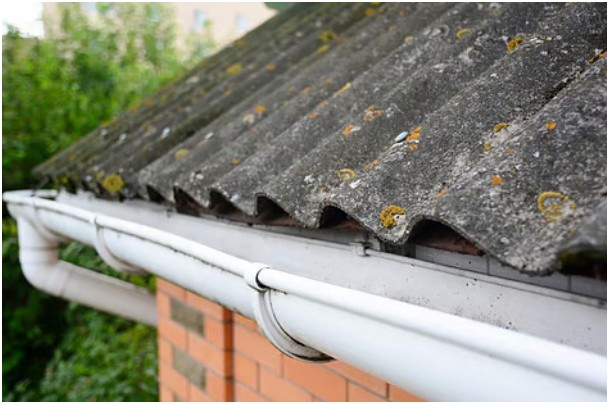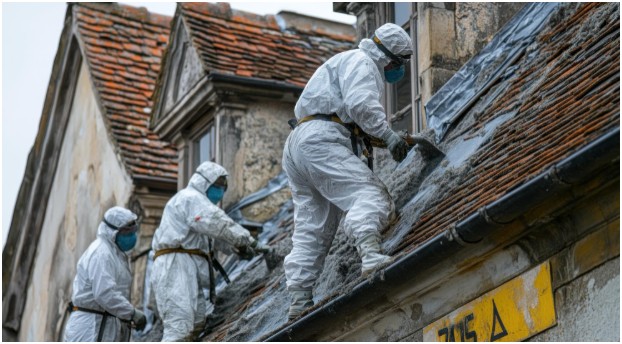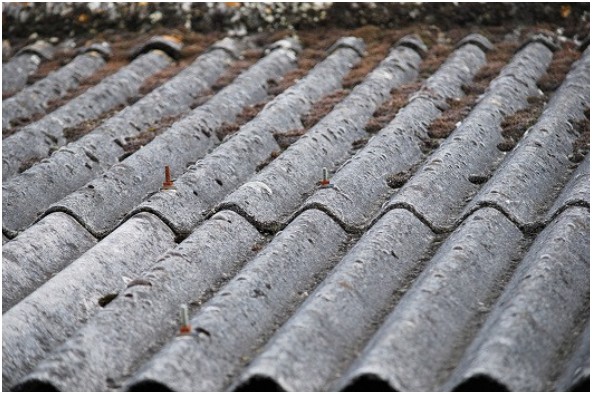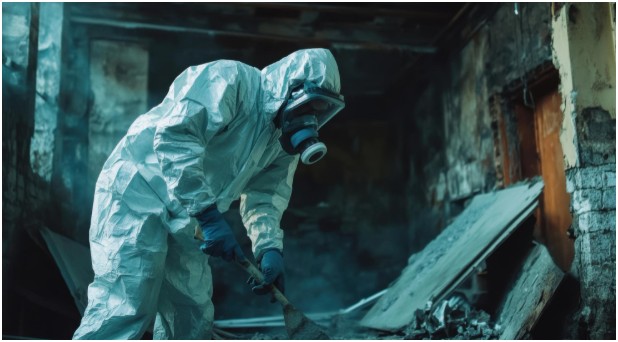I’ll never forget the day I discovered the ceiling of my charming 1950s fixer-upper was a health hazard in disguise.
There I was, excited about tearing down an ugly popcorn ceiling. The contractor took one look, raised an eyebrow, and said, “Uh, have you checked for asbestos?” I hadn’t.
And that moment launched me into the wild world of building codes, lawsuits, and the one question no one seems to know the real answer to: when did they stop using asbestos?
Spoiler alert: it’s not as cut and dry as people think. And if you’ve ever lived in, worked in, or even walked through an older building, you might want to read on.
When was Asbestos Used in Homes?
What years was asbestos used? Asbestos was commonly used in homes from the early 1900s through the 1970s. It was used in insulation, flooring, roofing, and fireproofing materials due to its heat resistance and durability. However, by the late 1970s, its use started to decline as health concerns became more widely known.
So, When Did They Stop Using Asbestos?

When did asbestos stop being used in houses? Most people think asbestos disappeared sometime in the 70s—wrong. While awareness of its health risks exploded in the 1970s (thanks to OSHA), asbestos didn’t stop being used in the U.S. overnight.
Asbestos-containing materials were still being manufactured and installed well into the 1980s, especially in insulation, roofing products, and floor tiles. And get this—some asbestos-containing products are still legal in the U.S. today, though their use is tightly regulated.
Here’s the general timeline most experts (and courts) follow:
| Decade | Milestone |
| 1970s | OSHA and EPA regulations begin tightening |
| 1989 | EPA bans most asbestos-containing products |
| 1991 | That ban is overturned by the courts (ouch) |
| 2003–present | Some voluntary manufacturer phase-outs occur |
| Today | Limited asbestos use still legal (yes, really) |
So the short answer to “when did they stop using asbestos?” is: they didn’t fully stop—it just got complicated.
Would a house built in 1985 have asbestos?

It is possible that a house built in 1985 could contain asbestos, particularly in materials like floor tiles, insulation, or older plumbing. By 1985, asbestos was no longer commonly used in construction, but some materials manufactured before that year may still have been in use.
Why Was Asbestos Used for So Long?
The thing about asbestos is, it worked. It was cheap, fireproof, insulating, and nearly indestructible. For decades, it was the golden child of construction materials. Pipes, brakes, ceiling tiles, cement—you name it.
However, the flood of health research soon followed. Asbestosis. Mesothelioma. Lung cancer. These diseases weren’t just scary; they were occupational nightmares. And the more we learned, the more we realized asbestos was a silent killer, especially when airborne.
The problem? By the time regulations caught up, asbestos had been baked into millions of buildings and products, and the cleanup would take decades.
Is Asbestos Still a Risk Today?

Short answer? Absolutely.
If your home, school, or workplace was built before the mid-1980s, there’s a chance that asbestos is lurking in the walls or ceilings, much like an unwanted ghost. Left undisturbed, it’s usually safe. But once you start renovations, drilling, or demoing, it becomes airborne. That’s when it’s dangerous.
And it’s not just older buildings. Some imported products, including brake pads and industrial gaskets, still contain asbestos under current U.S. law. I know—shocking, right?
So if you’re asking “when did they stop using asbestos?” because you want to feel 100% safe in your surroundings, I hate to break it to you—you’ll need to do a little digging.
How to Make the Most of “When Did They Stop Using Asbestos?”
The key here is to treat every pre-1990 building with caution until you know for sure what’s inside. Here’s what I tell my friends, clients, and, well, anyone with drywall and a power drill.
First, if you’re planning any renovation in a building built before 1985, get it tested by a certified asbestos professional. It’s not expensive, and it could save your lungs.
Second, if you discover asbestos, don’t touch it yourself. Removal requires hazmat gear, negative air pressure systems, and waste disposal plans. Hire a licensed abatement team.
Finally, keep documentation. If you’re a landlord, business owner, or seller, having clear asbestos records shows responsibility and reduces your liability.
Got Questions? Let’s Break Them Down
Can I tell if something has asbestos by looking at it?
Nope. That’s the tricky part. Asbestos fibers are microscopic and mixed into other materials. The only way to know for sure is through lab testing.
Is it illegal to have asbestos in my house?
Not at all. It’s only illegal to disturb it without proper precautions. If it’s in good condition and sealed, many people choose to leave it as is.
When was asbestos banned?
Asbestos was never completely banned in the U.S. but was heavily regulated starting in the 1970s. Some forms of asbestos, particularly in insulation and construction materials, were phased out during the 1980s, but certain uses still existed, especially in the automotive and shipbuilding industries, until the 1990s.
Can I remove asbestos myself to save money?
Technically, homeowners in some states can. However, unless you love wearing moon suits and are willing to risk inhaling deadly fibers, I wouldn’t recommend it. Legal liability alone makes it a bad idea.
Do newer homes ever have asbestos?
Rarely, but yes—it can still show up in imported materials. That’s why you should always check certifications when buying things like floor tiles or cement board.
When did they stop using asbestos in popcorn ceilings?
Asbestos was commonly used in popcorn ceilings until the late 1970s. The Environmental Protection Agency (EPA) issued regulations in 1978 that banned the use of asbestos in ceiling texture products. By the 1980s, the use of asbestos in popcorn ceilings was largely discontinued.
When did they stop using asbestos in floor tiles?
Asbestos was widely used in floor tiles until 1980. After this, regulations from the EPA began limiting its use, and by the late 1980s, most manufacturers had switched to non-asbestos alternatives for floor tile production.
When was asbestos in thermal surfacing and fireproofing materials banned?
Asbestos was banned in thermal surfacing and fireproofing materials by the late 1970s, particularly through EPA regulations. These materials were some of the first to be restricted due to the high risk of exposure to asbestos fibers.
How to know if you have asbestos?
To determine if your home contains asbestos, you should hire a professional to conduct an asbestos inspection. Common materials that may contain asbestos include insulation, floor tiles, ceiling tiles, roofing materials, and some types of pipes. If your home was built before the 1980s, it’s more likely to contain asbestos.
Do houses built in 1910 have asbestos?
Yes, houses built in 1910 could contain asbestos, especially in materials like insulation, flooring, and plumbing. Asbestos was commonly used in building materials during this era, but it wasn’t until the 1970s that its health risks were fully understood and regulatory changes began.
When Did They Stop Using Asbestos? A Closer Look
Here’s a more specific breakdown by product type. Use it to assess your risk level:
| Product | Common Use Period | Likely Safe After |
| Popcorn ceilings | 1950s–mid-1980s | After 1985 |
| Vinyl floor tiles | 1920s–late 1980s | After 1990 |
| Pipe insulation | 1930s–1970s | After 1980 |
| Cement roofing/siding | 1920s–early 1980s | After 1985 |
| HVAC duct insulation | 1950s–1970s | After 1980 |
Always test if you’re unsure. A $200 lab test could save you thousands in legal or health costs.
Asbestos Isn’t Ancient History—Handle With Care
If you’re still wondering when they will stop using asbestos, the answer is: not completely, and not soon enough.
The safest approach is awareness. Know the risk, test when in doubt, and treat asbestos like the quiet danger it is. And if you’re like me and love a good renovation project, just promise me you’ll test before you start swinging a sledgehammer.
As a legal contributor, I’ve seen too many well-meaning folks land in lawsuits—or worse—just because they assumed the danger was ancient history.
So take a breath, play it smart, and when in doubt? Get it tested. Stay safe, stay informed—and never trust a popcorn ceiling.




